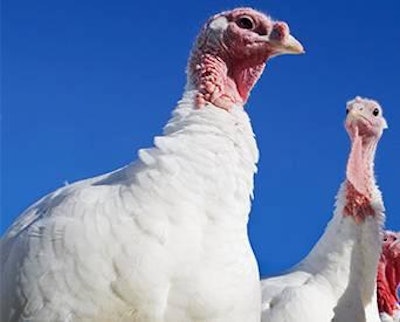
U.S. turkey producers have lost just over 7 million birds as a result of the avian influenza outbreak of 2015, according to USDA Animal & Plant Health Inspection Service (APHIS) data. These losses represent around 3 percent of what the total U.S. turkey slaughter was in 2014 in terms of head, but the farm losses are not reported as hens or toms and meat birds are not segregated from breeders. Industry sources report that tom meat bird farms and turkey breeder farms have suffered the majority of the losses so far in this outbreak.
Avian flu breeder losses
Industry sources report that turkey breeder farms in the Upper Midwest, particularly those in Minnesota, suffered avian influenza losses at a greater rate than have meat bird farms. The loss of the output of these turkey breeders will likely have a greater impact on total industry output than the meat bird losses have had so far. It is estimated that breeder hens that could have produced 10-20 million fertile hatching eggs have been lost in the current outbreak through early June. With an assumed hatch rate of 83 percent these eggs would produce 8.3-16.6 million poults. The wide range in the estimate stems from uncertainty over the ages of the breeders that were lost and thus how many more weeks of production they would have had left.
The impact of the breeders losses from the avian influenza outbreak are evident in the USDA’s Turkey Hatchery report released June 16. U.S. turkey poult placements were 8 percent lower in May of 2015 and the number of eggs in incubators was down 5 percent on June 1 as compared to the same time periods last year.
How long to clean up?
Two Minnesota turkey farms that broke with avian influenza in March of this year received birds again just three months later. This is probably about as fast as this can happen, and industry sources suggest that the average time from depopulation to restocking a farm will average more than three months. Because of the lost breeder hens, farms may be ready for birds, but poults may be in short supply.
Prior to the avian influenza outbreak, U.S. turkey producers had a small surplus of hen poults. Industry sources suggest that hen poults, that would have been surplus without the avian influenza outbreak, will be placed on some tom farms and raised to be deboned as a means of offsetting the expected tom poult shortages. Other turkey breeder farms will likely keep hens in production for additional weeks or molt additional hens to lay for a second cycle to somewhat offset the breeder losses in the Upper Midwest.
It is expected that the impact of the turkey breeder losses to date as a result of the avian influenza outbreak will continue to somewhat suppress U.S. turkey slaughter volume through the end of 2016.


















